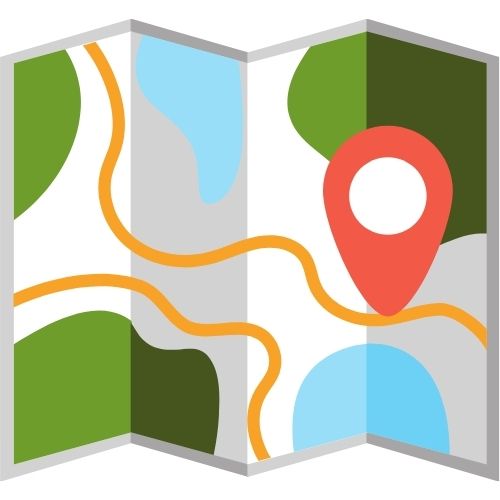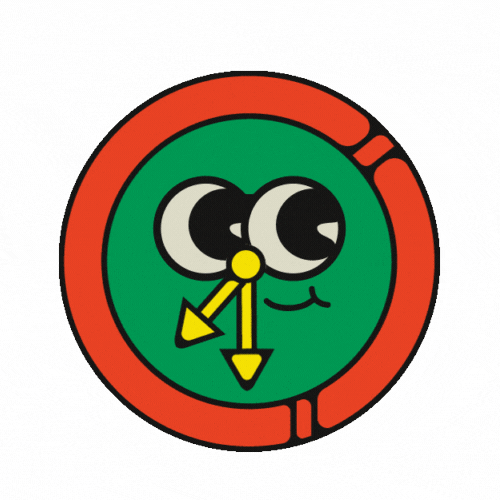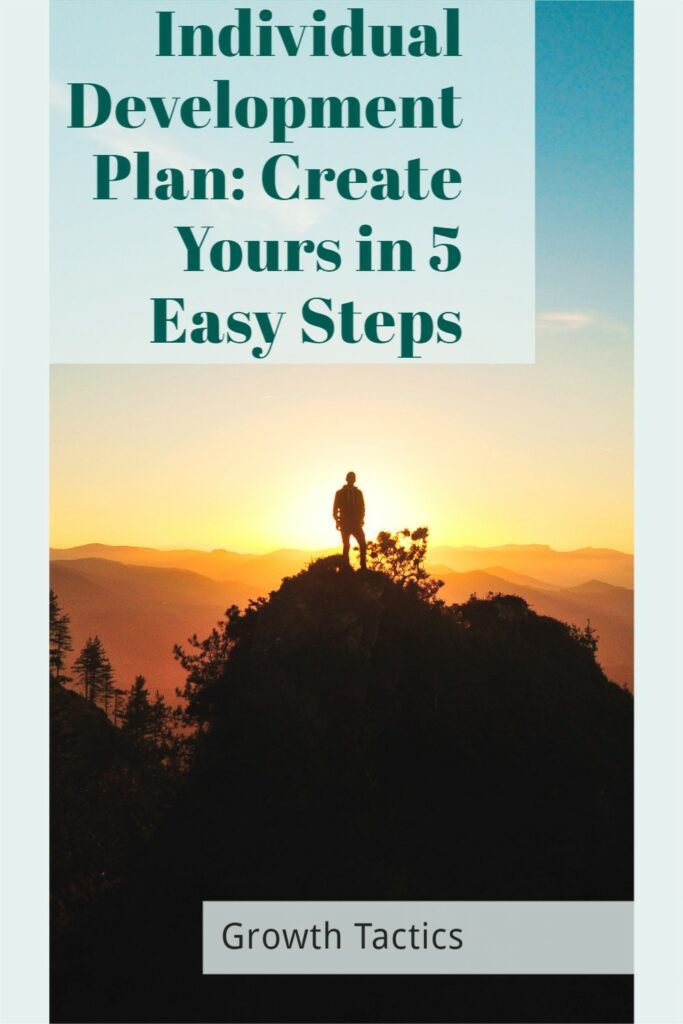Jump To Section
What is an Individual Development Plan?
An individual development plan or IDP is a tool used by people to advance their personal and professional skills. It is used to map out your future and guide you in achieving your goals. It allows you to understand your strengths and weaknesses, furthering your career development and reaching your career development goals.
IDPs enhance your development by keeping you focused and on the right path toward achieving the development to reach your personal and professional goals. Instead of not knowing what your next step will be, the plan keeps you moving forward.
Who Are They For?
Everyone can benefit from an IDP. If you are a manager, business owner, or a person starting in the corporate chain, you will grow with the right plan. This is your plan to go from where you are to where you want to be.
What is Personal Growth and Development?
Personal growth is a process of becoming more aware of your strengths and weaknesses, as well as what motivates you. It’s about learning to become the best version of yourself, both in terms of your personal life and your professional life.
The key to personal growth is learning to recognize when there are things that need changing in your life and then taking steps to change those things. You can’t expect yourself to grow if you don’t take steps toward making it happen!
When you’re working on personal growth, it’s important to have a plan in place. This is where an individual development plan comes into play. It can help you stay focused, keep track of your progress, and know when it’s time to make changes, enhancing your overall personal growth.
Actionable Steps For Writing an Individual Development Plan
Step 1: Access Your Goals

Goals are the foundation of an effective personal development plan. List out your long-term career goals and/or any other personal goals. These goals should focus on the next 3-5 years or more in some cases. This will be what guides the rest of the plan.
For this, you should be using the SMART goal format. That means your goals should be specific, measurable, achievable, realistic, and time-bound.
For example, you may have a goal to be a nurse. The SMART goal may look something like “I will be a nurse working for a hospital in 6 years.”
Career Goals Examples
Below are some example career goals for inspiration.
- Complete all the required training courses to acquire a leadership role in my organization in a year.
- Perform excellent on the tasks given to me at work. To put myself in a position to ask for a raise in the next 3 months.
- Take an internship in the career I want to pursue in the next 6 months. To build the experience I need for my dream job.
- Fix my LinkedIn profile within 3 weeks to give me the best shot at finding a new career.
- Make at least 4 new professional connections in my field in the next 2 weeks to build my network.
- Rewrite and rework processes to increase efficiency in my shop in the next 2 months.
Personal Development Goals Examples
Here are some examples of personal development goals.
- Take a course to improve my time management skills in the next 3 months.
- Take 10 minutes each day to meditate and reflect on the day.
- Have a conversation with at least 1 new person each day for the next 3 weeks to build my communication skills.
- Read at least 20 minutes each day to improve my personal growth.
Step 2: Identify Training and Development Needs
Make a list of the skills and education that will make you successful in your path.
If your goal is to be a nurse, what skills and education do you need? You know you need the formal education required to be a nurse, but many other skills lead to success. For instance, a good nurse is compassionate, good with other people, and is also a good communicator.
Step 3: Evaluate Yourself
In this step, you need to take a good look at your current knowledge and skills. What are your strengths and weaknesses? Match these up with the skills and knowledge required for your goals. List development opportunities related to your goals and your needs.
Back to our nursing example, you may reflect and realize you are compassionate but may not be the best communicator. This tells you that work needs to be done in the communication area. This will be one of the items on this person’s development plan.
Step 4: The Road Map

In this step, you create an action plan to lead you to your long-term goals. Create your short (within a year) and mid-term (1-3 years) goals. Again, you want to use the SMART goal format to ensure these have a time frame and are achievable.
All your short and mid-term goals should get you to your long-term goal. For example, if one of your weaknesses is communication. You may make a goal of taking an improv class within the next year to improve your skills.
Once you’ve identified your action items to reach your long-term goal, reorder them in chronological order of when you will start them. This will act as your individual development plan checklist or roadmap.
Step 5: Monitor Your Progress
The final step is to monitor your progress. You want to look over and reevaluate your development plan frequently. This will ensure you are on track with your plan and remind you of your goals.
Once you start down a path you may find other items or skills that you need to reach your goal. That is fine as long as they get added to your personal development plan.
Continuous self-assessment and improvement are crucial to an effective individual development plan. Be ready for new challenges in your career path.
Individual Development Plan Template
- Goals: what you want to work towards.
- Objectives: how you’re going to achieve your goals.
- Strategies: what you’ll do to achieve your objectives (the steps).
- Actions: specific things you will do or say that will lead to accomplishing the strategy steps (the details).
Individual Development Plan Example
Name:
Jane Doe
Position:
Marketing Coordinator
Date:
November 1, 2023
1. Self-Assessment
Reflect on your strengths and areas for growth. Know yourself.
Strengths:
- Creativity
- Strong communication skills
- Project management
Development Areas:
- Time management
- Advanced analytics skills
2. Development Goals
Set specific, achievable goals. Make them your own.
Short-Term Goals (1-6 months):
- Improve time management by using a daily planner.
- Complete an online course in advanced analytics.
Long-Term Goals (6-12 months):
- Take on a leadership role in at least one project.
- Mentor a junior team member to build leadership skills.
3. Action Plan
Outline clear steps. Take purposeful actions.
Steps to Achieve Short-Term Goals:
- Buy a daily planner by next week.
- Dedicate 30 minutes each day to planning tasks.
- Enroll in an advanced analytics course by the end of the month.
Steps to Achieve Long-Term Goals:
- Speak with my manager about leadership opportunities within the next two months.
- Identify and propose taking the lead on a small project by February.
- Offer to mentor new team members starting next quarter.
4. Resources Needed
Identify what you need to succeed. Ask for help if needed.
- Budget for online courses
- Access to project leadership training
- Support from my manager and team
5. Timeline and Milestones
Keep track of progress. Stay on course.
Short-Term Milestones:
- Planner purchased by November 7.
- Enroll in course by November 30.
- Improved time management by January 2024.
Long-Term Milestones:
- Lead a project by June 2024.
- Successfully mentor a team member by December 2024.
6. Evaluation
Review regularly. Adapt as needed.
Schedule monthly check-ins with my manager to review progress. Adjust goals and actions as necessary, keeping alignment with personal growth and organizational needs.
Remember: This plan is about your growth. It’s your journey. Embrace it with purpose.
Tips for Success
Set the Deadline

Giving yourself a set amount of time to complete your goals is crucial. Without a deadline, many of us will procrastinate. Especially if they are tasks that we don’t enjoy.
A timeline is also helpful in monitoring your progress. For example, you may have given yourself 2 years to get certain tasks done. But you were able to knock them out in 1 year. This tells you that you are ahead of your timeline.
Keep Your Eyes on the Prize
Remember why you are doing the things you are doing. Look for every opportunity to remind yourself of your long-term goals.
A vision board is a great way to do this. Vision boards are simple and effective ways to visually represent your goals and vision of your future. All you need to do is put some pictures that represent your long-term goals on a board. Then post the board somewhere that you see often.
Be Realistic
As with any goal, they need to be realistic and achievable. Set your goals high but not impossible. If you choose impossible goals, you are setting yourself up for failure from the start.
Track Progress
Progress leads to more progress. When you see how far you’ve come, it motivates you to keep going. Without tracking it you may not realize the progress you are making.
Journaling is a great way to keep track of your progress. But if you don’t want to invest that much effort, a simple checklist or timeline will work just fine.
Understand Your Vision
Your vision of your future and where you want to be is the heart of an individual development plan. The plan will be your guide to get there. If you choose the wrong vision, it will likely lead to disappointment and the chances of failing are high. With the right vision, success and happiness will come a lot easier.
A great way to determine your vision is by making a personal vision statement. Investing a short amount of time will provide massive benefits. It is a 1 to 2 sentence statement describing your vision of where you want yourself to be in the future.
Focus on What You Control

All of us have times when we get caught up worrying about things outside our control. This can be self-destructive and demotivating. That’s why we need to catch ourselves when this happens and focus on what we can control.
For example, we can’t control whether our boss gives us a promotion at work. What we can control is our quality of work, building our leadership skills, and ensuring the company benefits from having us.
Focusing on the things you can control, will save you a lot of headaches and make you a more beneficial asset.
Seek Constructive Feedback
Feedback is a wonderful resource. Most people are happy to give you their opinion and advice. Some are more useful than others but don’t pass up an opportunity to discuss your personal development goals with others. Family, peers, and people that have done it before are all great resources.
These people will provide an outside perspective on what you are trying to do. They may also provide information and guidance on areas that you missed in your IDP. This information can be invaluable or at least eye-opening.
Practice Flexibility and Resilience
Things rarely go as we planned them in real life. That’s where flexibility and resilience are key.
To the best extent possible, you need to be ready for setbacks and minimize their effects. When setbacks do happen, realize it’s just a hurdle to jump over and not the end of the race. Focus on finding a solution and a way forward instead of feeling sorry for yourself.
I know this is easier said than done but with the right mindset, you will achieve great things.
Seeking Mentorship for Personal Growth
Mentorship can be a powerful tool for personal growth. Finding a mentor helps you learn from someone with experience. A mentor offers guidance, support, and honest feedback. This relationship lets you see different perspectives and gain new skills.
Remember, mentors are there to help, but your growth depends on your efforts. Choose a mentor who aligns with your goals and values. Be open, ask questions, and take action on their advice.
Seeking mentorship shows a commitment to your own development. It’s a step towards becoming the best version of yourself.
Embracing Continuous Professional Development: The Key to Long-Term Success
Continuous professional development (CPD) is an essential aspect of an individual’s development plan. It involves the deliberate and consistent process of learning, upskilling, and refining one’s knowledge and skills throughout their career. CPD ensures that professionals stay relevant, competitive, and adaptable in today’s ever-evolving job market. Let’s delve into why CPD is vital and how it can be integrated into your development plan.
The Importance of Continuous Professional Development
- Staying relevant: With industries constantly growing and changing, it’s essential to stay updated with the latest trends, technologies, and methodologies. CPD helps professionals maintain their expertise and adapt to new developments in their field.
- Enhancing career prospects: By continually upgrading your skills and knowledge, you become more valuable to employers, increasing your chances of promotions, salary raises, and career advancement opportunities.
- Fostering personal growth: CPD enables individuals to grow both personally and professionally by encouraging self-reflection, goal setting, and continuous learning.
- Meeting industry standards: Many professions require professionals to maintain a certain level of knowledge and skills through ongoing education. CPD ensures that you meet these standards and maintain your professional licenses or certifications.
Incorporating CPD into Your Individual Development Plan
- Identify your learning needs: Start by assessing your current skills, knowledge, and areas for improvement. Consider your career aspirations and the skillset needed to achieve them. This will help you pinpoint specific learning objectives and create a roadmap for your CPD journey.
- Set SMART goals: Develop clear, specific, measurable, achievable, relevant, and time-bound goals for your continuous professional development. This will help you stay focused and motivated throughout the process.
- Choose the right learning resources: Continuous professional development can take many forms, such as attending workshops, enrolling in online courses, participating in webinars, or reading industry-related books and articles. Select the resources that suit your learning style and preferences.
- Develop a schedule: Allocate regular time for your CPD activities to ensure consistency and progress. Consider setting aside a specific time each week or month for learning and development.
- Track and evaluate your progress: Keep a record of your CPD activities, including the learning objectives, resources used, and outcomes achieved. Regularly review your progress to assess the effectiveness of your learning strategies and make any necessary adjustments.
By incorporating continuous professional development into your individual development plan, you not only invest in your career growth but also enhance your personal and professional satisfaction. Embrace the power of lifelong learning and unlock your full potential as you navigate the ever-changing landscape of your professional life.
Final Thoughts
An IDP can be useful for both your personal and professional growth. Now that you know how to make your own, it’s time to create one and unlock more of your true potential.
Did you enjoy this article on creating an individual development plan? Please share using the buttons below.


